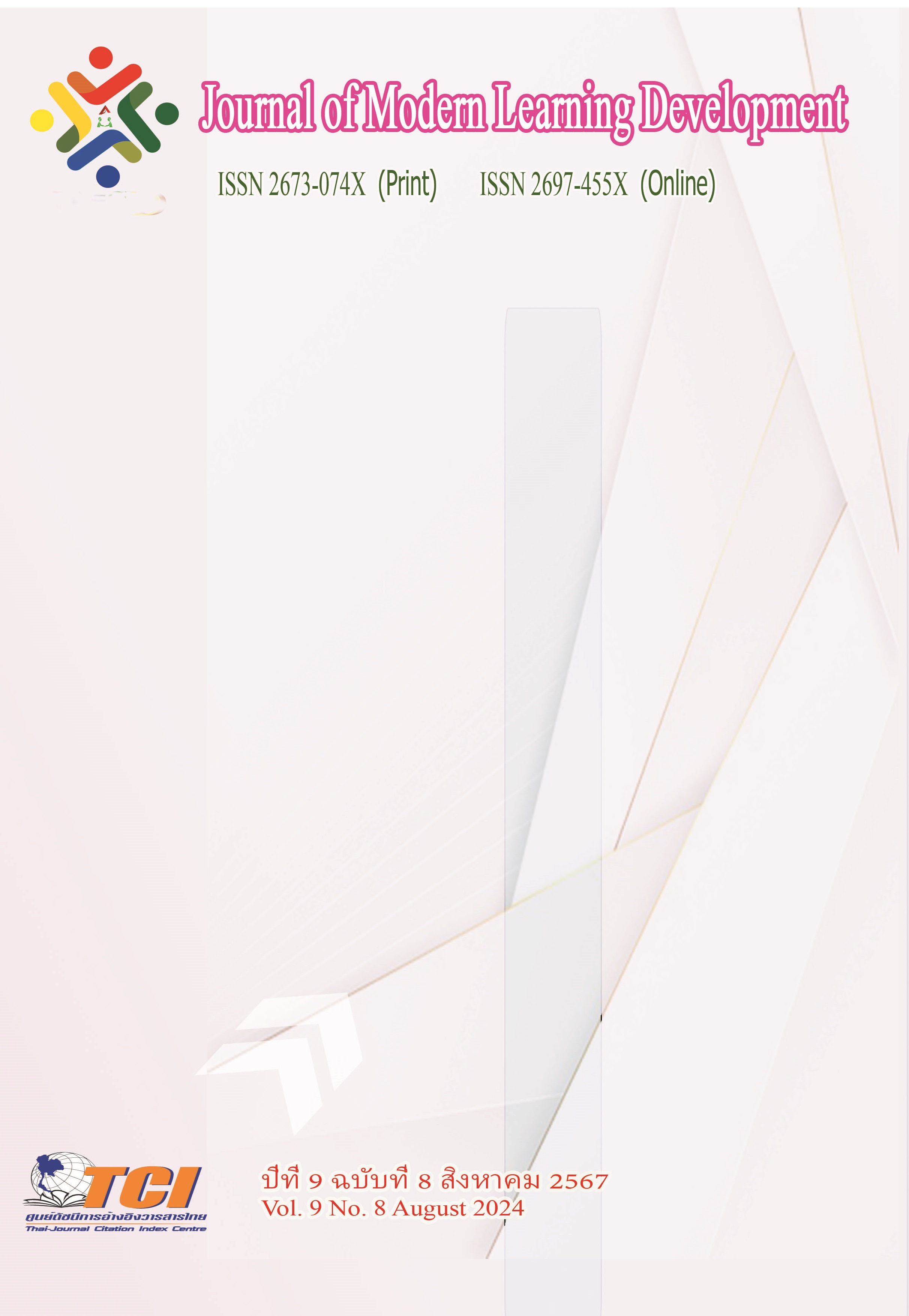The Tang Dynasty Palace Dance in Luoyang:Inheritance Value, Conservation and Development
Main Article Content
Abstract
The Luoyang area is rich in Tang Dynasty cultural heritage resources, but these historical resources have not been reused either from the perspective of dance academic research or dance choreography innovation. In the new era, due to the lack of attention to cultural heritage, Tang Dynasty Palace dance is gradually disappearing from people's sight, and the problem of being unable to continue traditional culture is becoming increasingly prominent. Therefore, it is more urgent to conduct in-depth research on it and explore ways to protect it.The research objectives of this paper are: (1) The cultural heritage value of Tang Dynasty Palace music and dance art. (2) Problems and countermeasures in the protection and development of Tang Dynasty Palace dance. This study mainly adopts qualitative research methods. The research tools used mainly include basic surveys, observations and interviews. The data are collected through written documents and field investigations, and then organized and analyzed. A descriptive analysis method is proposed. The research results are as follows: (1) Tang Dynasty Palace music and dance is a display of national cultural charm, a practice of national ideas, and an era identity in innovative development; (2) Cultural inheritance and development are faced with problems such as weak cultural atmosphere, lack of professional team talents, and dance creation adhering to tradition and lack of innovation. The final research shows that it is necessary to continue to adhere to the correct direction of the inheritance and development of the Tang Dynasty Palace dance culture, cultivate the cultural self-confidence of the youth group, and promote the innovative development of the Tang Dynasty Palace dance culture. The conclusion of this study has certain reference value for the government and the masses to further inherit and develop the Tang Dynasty Palace dance, and for researchers to further conduct in-depth research.
Article Details
References
Deng, J. (2014). The inheritance and development of Chinese classical dance. Journal of Hubei University of Science and Technology, 148-149.
Ding, Q. (2013). The historical process of court dance in Han and Tang Dynasties. Lantai World, 104-105.
Fan, B. L., & Zhao, Q. (2017). The inheritance and development of contemporary Chinese classical dance. northern music.
Huang, M. G. (2006). A preliminary study on music and dance in the Tang Dynasty
Jiang, Y. R. (2014). Experience and lessons in the inheritance and development of dance in the Sui and Tang Dynasties
Li, W. Y. (2020). Analysis of the inheritance and development of classical dance teaching in colleges and universities. Sound of the Yellow River, 64-65.
Liu, Z. (2017). Looking at the morphological characteristics of South Vietnam’s court dance from the unearthed jade dancers. Big stage, 88-92.
Ma, Y. D. (2023). Research on the development status and protection strategies of Yugur dance from the perspective of dance ecology northwest normal university].
Tang, H. (2019). A brief discussion on the comparison and inheritance of typical music and dance styles of Han and Tang Dynasties. 86+88.
Tao, J. (2016). A comparative study of "palace dance" and "folk dance" in the Tang Dynasty Jiangxi Normal University].
Wang, H. Y. (2012). The artistic characteristics of ancient Chinese dance and its inheritance and development in the new era. Jiannan Literature (Classics Education Garden), 185.
Wang, J. (2014). Diverse categories and characteristics of Song Dynasty dance. Big stage, 153-154.
Wang, X. Q. (2018). Research on the protection and inheritance of original ecological folk dance Zhejiang University].
Xiao, J. (2016). Research on the inheritance of Miao dance in Huayuan County, Western Hunan from the perspective of "intangible cultural heritage" protection Nanchang University].
Yang, Y. F. (2022). A brief discussion on the history and development of music and dance in the Tang Dynasty.
Zhu, Y. X. (2017). On the artistic characteristics of court music and dance in the Tang Dynasty.


